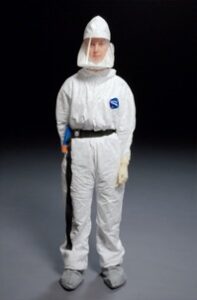The 4 PPE Levels for Disaster Restoration Company Employees
 Personal protection equipment or PPE is essential for employees working in certain industries. This includes healthcare professionals, biochemical engineers, food service employees, and other chemical-related industries.
Personal protection equipment or PPE is essential for employees working in certain industries. This includes healthcare professionals, biochemical engineers, food service employees, and other chemical-related industries.
Similarly, employees working for a disaster restoration management company must follow these safety protocols and gear up in PPEs when working around sites with hazards present.
It does not matter if your work involves direct contact with dangerous substances and chemicals; PPE is necessary for all to ensure a safe and secure working environment.
There are four different levels of PPE for the employees of a Disaster Restoration Company. Let’s study them in detail and find out which PPE Level is suitable for your employees.
The 4 Levels of PPE
There are four essential levels of PPE that need to be followed by all employees of a disaster restoration company. These levels are directed by the Occupational Safety and Health Administration (OSHA).
The set of equipment required in PPE varies depending on its level. Each level has a different requirement, and employees should follow the rules based on the severity of the situation.
First Level of PPE – Level A
Level A PPE is regarded as the top of the line when it comes to safety protocols. This level will provide you with the highest level of protection against biohazards and other serious health issues like respiratory hazards, skin and eye exposure to contaminants, etc.
At this level, employees are required to wear a full-body suit and install an air respirator to ensure airflow.
The key components of Level A PPE include:
- Positive pressure. This is a self-contained breathing apparatus approved by the National Institute for Occupational Safety and Health (NIOSH)
- A fully encapsulated body suit that protects from chemicals
- Steel-toe boots that protect from chemicals
- Chemical-resistant gloves with protected inner and outer layers
- Hardhat or helmet.
Second Level of PPE – Level B
Level B PPE particularly emphasizes protecting against contaminants affecting the respiratory system.
Level B PPE is ideal for employees who work in close vicinity to a gas laboratory or site area.
When it comes to differentiating between level A PPE and level B PPE, it is the type of suit required for each level.
The key components of Level B PPE include:
- Two-piece suits
- Coveralls
- Long-sleeves protect from small chemical splashes
Third Level of PPE – Level C
The third level of PPE or Level C PPE is perfect for employees at risk of catching any airborne disease. The good news is that at this level, your eyes and skin are not at any risk.
Therefore, you are not required to wear a full mask if you are following Level C PPE protocol. However, it is ideal you wear a full or half-face mask to ensure proper airflow from the respirator.
Typically, Level C PPE and Level B PPE are more or less the same in nature and in terms of providing protection. Level C PPE is not recommended if you are working near a chemical site.
Fourth Level of PPE – Level D
This is the lowest level of protection for employees working in disaster restoration companies.
You don’t need an air respirator at this level, and the working conditions are considerably safer when Level D PPE is implemented.
The key components of Level B PPE include:
- Coveralls
- Safety boots
- Chemical-resistant goggles
Which PPE Level is Required for Your Employees?
You need to consider a few factors when determining which level of PPE is suitable for the employees of your disaster restoration company.
According to the Occupational Safety and Health Administration (OSHA), a color-coded system has been implemented to distinguish each PPE level. The colors are classified into red, yellow, and green zones. First-responders make use of this color-coded system in cases of emergencies.
Look at the guide below to get a clear idea of which PPE level is ideal for your disaster restoration company.
Level A
Level A PPE is required in highly toxic environments. This includes companies with a chemical site nearby or just a general risk of exposure to gases or harmful vapor.
Another severe health hazard is the amount of ammonia present in the air, as excessive exposure can severely damage your lungs.
Level B
Level B PPE is essential in environments with a high risk of having airborne gases. Level B PPE does not protect toxic or harmful liquid substance if it is present near the worksite.
Level C
Level C PPE is required in cases where you can measure the concentration of an airborne substance easily as it is either limited in quantity or is not too harmful.
Level C PPE does not protect against skin and eye exposure, so make sure you implement it for employees working under similar conditions only.
Level D
Level D PPE is used required in places where just surface-level protection is required. This level of PPE is ideally utilized during the commercial cleaning process.
Your employees only need to wear coveralls and safety boots according to Level D PPE.
Trust 911 Restoration of Northern Virginia to Follow All Safety Precautions
If you are looking for a reliable and professional disaster restoration company that strictly adheres to OSHA’s PPE laws, then 911 Restoration of Northern Virginia is the right fit for you.
911 Restoration of Northern Virginia ensures the safety and protection of all its customers, employees and staff members by providing them with the required level of PPE.
Get in touch with them right away on their website and experience professional disaster restoration services like never before.


